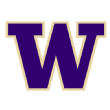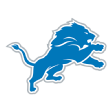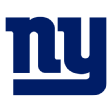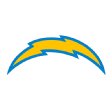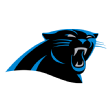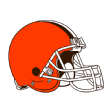College football's top 10 quarterback battles to watch in 2020
The transfer portal has added even more intrigue to the most talked about position in college football.
Three of the four starting quarterbacks in last season's College Football Playoff joined their teams as transfers. The fourth, Clemson's Trevor Lawrence, rose so rapidly as a true freshman that he forced incumbent Kelly Bryant, the reigning ACC offensive player of the year, to transfer to Missouri.
The tracking of quarterback transfers is a subplot of every offseason, and that will continue well into the spring and summer. But we now know enough to size up the most interesting quarterback situations around the country, about seven months before the 2020 season kicks off.
Not all of these situations include transfers. Some include returning starters. Others feature new playcallers. But all 10 carry some degree of intrigue and could impact races for divisions, leagues and even the CFP.
Let's get to the rundown.
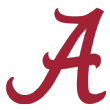
Alabama Crimson Tide
Returning starter: None
Key newcomer: Bryce Young (top dual-threat quarterback, No. 5 overall in 2020 class)
Breakdown: The attention on Tua Tagovailoa's injury, surgery, recovery and NFL draft decision delayed the spotlight shift toward the 2020 quarterback situation, but it's here now. Mac Jones did well in relief of Tagovailoa, passing for 1,503 yards and 14 touchdowns with three interceptions, despite starting only four games. The redshirt sophomore knows the system and an offensive staff that, unlike in previous years, returns fully intact. But he must distance himself from Young, the former USC recruit who provides the explosive playmaking ability that Tagovailoa brought the past two-plus seasons. Nick Saban will play a freshman quarterback if one is ready, but Jones enters spring practice as the favorite to start. Also in the mix is Taulia Tagovailoa, Tua's brother, who appeared in five games last season and completed nine of 12 pass attempts.
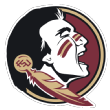
Florida State Seminoles
Returning starter: James Blackman
Key newcomers: Chubba Purdy (No. 5 pocket passer, No. 126 overall player in 2020 class); Tate Rodemaker (No. 24 dual-threat quarterback in 2020 class)
Breakdown: This group is the top priority for new Seminoles coach Mike Norvell, who seems to produce dynamic offenses everywhere he goes. Blackman has started two seasons for two different coaching staffs. His adjustment to Norvell's offense will be interesting, as last season he ranked among the top 15 nationally in completions longer than 50 yards, 60 yards and 70 yards. But the new FSU coaches picked up both Purdy and Rodemaker during a strong recruiting push before the early signing date. Purdy, whose older brother, Brock, is Iowa State's top quarterback, comes to Tallahassee as the more decorated prospect. The Arizona native connects well with both Norvell and offensive coordinator Kenny Dillingham, both of whom have ties to the Phoenix area. Rodemaker enrolled early and has a chance to impress the staff this spring before Purdy arrives.

Georgia Bulldogs
Returning starter: None
Key newcomers: Jamie Newman (transfer from Wake Forest); Carson Beck (ESPN's No. 14 pocket passer in 2020 recruiting class)
Breakdown: Jake Fromm led Georgia to 35 wins, three SEC East division titles, a conference title and nearly a national title. But his departure to the NFL, combined with an offensive coordinator change and the addition of Newman, sends Georgia into a new phase. The Bulldogs must close the gap with teams such as LSU, Alabama and Clemson and hope that veteran playcaller Todd Monken can deliver. Newman, who started the past two seasons at Wake Forest, is the favorite to win the top job. He's a big body (6-foot-4, 230 pounds) who thrived in Wake Forest's delayed RPO scheme but also struggled after losing his best wide receivers to injury late last season. Georgia also returns Stetson Bennett, who had 27 pass attempts as Fromm's backup last season, as well as D'Wan Mathis, a one-time Ohio State recruit who redshirted last season. Newman has a fairly clear path to the starting job, but how he clicks with Monken and his new team will be something to watch this spring.
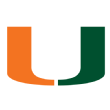
Miami Hurricanes
Returning starter: None
Key newcomers: D'Eriq King (transfer from Houston); Tyler Van Dyke (No. 3 pocket passer, No. 110 overall player in 2020 class)
Breakdown: At the very least, the characters here are fascinating. King made national news when he voluntarily employed the redshirt rule at Houston last season, saying he intended to return for the Cougars in 2020. Instead, he picked Miami over several other transfer suitors and immediately becomes the heavy favorite to start for the Hurricanes. Miami's quarterback room has been a problem for a while, and coach Manny Diaz hired offensive coordinator Rhett Lashlee from SMU to fix things. The King-Lashlee tandem could boost a Miami offense that ranked 106th nationally in adjusted QBR in 2019. Although Jarren Williams, Miami's primary starter in 2019, entered the transfer portal last month, N'Kosi Perry and Tate Martell are still around. Perry has started 14 games the past two seasons. Martell has struggled to find a role and twice left the team because of personal issues. Van Dyke is a talented addition who should be a factor in 2021 and beyond.

Michigan Wolverines
Returning starter: None
Key newcomers: None
Breakdown: Shea Patterson passed for 5,661 yards and 45 touchdowns the past two seasons for Michigan, but the Wolverines clearly need more from the quarterback position. That isn't a knock against Patterson, but Michigan's lack of an elite QB during a time when passing records are rewritten annually exposes its talent deficiencies elsewhere. Michigan fans hoping to see more of Dylan McCaffrey in 2019 could get their wish. The fourth-year junior is a legitimate dual-threat quarterback who could thrive in coordinator Josh Gattis' system. McCaffrey will be pushed, though, by Joe Milton, who boasts size (6-foot-5, 245 pounds) and arm strength but not much experience. When Michigan's offense struggled early last season, a source familiar with the team's personnel told me, "Do they play Joe Milton? Joe's the most talented one out of all of them. It's not even close." We'll soon find out.
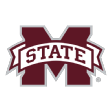
Mississippi State Bulldogs
Returning starter: None
Key newcomers: K.J. Costello (transfer from Stanford); Jaden Walley (No. 23 dual-threat quarterback in 2020 class); Will Rogers (No. 34 pocket passer in 2020 class)
Breakdown: Mike Leach's arrival in StarkVegas automatically makes things interesting. The coach oversaw the nation's top passing offense in four of the past six seasons at Washington State, mentoring Luke Falk, Gardner Minshew and Anthony Gordon. Big news came Monday as Costello, who started 25 games at Stanford, announced he's transferring to Mississippi State as a graduate. Costello produced big numbers for Stanford in 2018, albeit in a dramatically different offense. Leach has more familiarity with Costello, who faced Washington State in 2017 and 2018, than any of the quarterbacks he inherits. Garrett Shrader started four games as a freshman last season and showcased dual-threat ability. But Leach prioritizes accuracy with his quarterbacks, and both Shrader (57.5 percent completions in 2019) and Keytaon Thompson (50-of-105 career passing) need to improve there. Rogers, an early enrollee, and Walley are both three-star recruits.
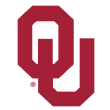
Oklahoma Sooners
Returning starter: None
Key newcomers: Chandler Morris (No. 7 dual-threat quarterback, No. 196 overall player in 2020 recruiting class)
Breakdown: The fascinating part here is that Lincoln Riley doesn't have a transfer quarterback for the first time in his Oklahoma coaching career. That Riley didn't look for a transfer reinforces his belief in Spencer Rattler, the front-runner to win the starting job. Rattler, ESPN's top dual-threat quarterback and No. 29 overall player in the 2019 class, provides Riley with some of the elite skills shown by OU's recent transfer quarterbacks. Tanner Mordecai is staying with OU for now and will compete with Rattler this spring, but he has just 30 pass attempts in two seasons with the Sooners. Riley famously prolongs quarterback competitions, even when the starter is fairly obvious (hello, Kyler Murray), and likely won't announce a winner until just before the season. It will be a surprise if Rattler doesn't take the first snap against Missouri State, but Mordecai is capable, and Morris, the son of former Arkansas and SMU coach Chad Morris, also could shape the competition.

Oregon Ducks
Returning starter: None
Key newcomers: Robby Ashford (No. 8 pocket passer, No. 168 overall player in 2020 class); Jay Butterfield (No. 11 pocket passer, No. 204 overall player)
Breakdown: Oregon returns its best defense in recent memory, the nation's top offensive lineman (left tackle Penei Sewell) and seemingly enough depth at receiver and running back. If the Ducks get the quarterback right, they should be in CFP contention. Four-year starter Justin Herbert departs, and redshirt sophomore Tyler Shough is poised to step in after backing up Herbert in 2019. Shough, a four-star recruit in the 2018 class, is a big body like Herbert, and redshirt freshman Cale Millen also has good size. But Oregon's 2020 recruiting push under Mario Cristobal included two ESPN 300 quarterbacks, including Butterfield, an early enrollee. Although Shough brings some experience, Oregon's quarterbacks have a clean slate under new coordinator Joe Moorhead, arguably the splashiest assistant hire of the offseason. Moorhead wants quarterbacks who can move and thrive in the RPO game.
The transfer portal has added even more intrigue to the most talked about position in college football.
Three of the four starting quarterbacks in last season's College Football Playoff joined their teams as transfers. The fourth, Clemson's Trevor Lawrence, rose so rapidly as a true freshman that he forced incumbent Kelly Bryant, the reigning ACC offensive player of the year, to transfer to Missouri.
The tracking of quarterback transfers is a subplot of every offseason, and that will continue well into the spring and summer. But we now know enough to size up the most interesting quarterback situations around the country, about seven months before the 2020 season kicks off.
Not all of these situations include transfers. Some include returning starters. Others feature new playcallers. But all 10 carry some degree of intrigue and could impact races for divisions, leagues and even the CFP.
Let's get to the rundown.

Alabama Crimson Tide
Returning starter: None
Key newcomer: Bryce Young (top dual-threat quarterback, No. 5 overall in 2020 class)
Breakdown: The attention on Tua Tagovailoa's injury, surgery, recovery and NFL draft decision delayed the spotlight shift toward the 2020 quarterback situation, but it's here now. Mac Jones did well in relief of Tagovailoa, passing for 1,503 yards and 14 touchdowns with three interceptions, despite starting only four games. The redshirt sophomore knows the system and an offensive staff that, unlike in previous years, returns fully intact. But he must distance himself from Young, the former USC recruit who provides the explosive playmaking ability that Tagovailoa brought the past two-plus seasons. Nick Saban will play a freshman quarterback if one is ready, but Jones enters spring practice as the favorite to start. Also in the mix is Taulia Tagovailoa, Tua's brother, who appeared in five games last season and completed nine of 12 pass attempts.

Florida State Seminoles
Returning starter: James Blackman
Key newcomers: Chubba Purdy (No. 5 pocket passer, No. 126 overall player in 2020 class); Tate Rodemaker (No. 24 dual-threat quarterback in 2020 class)
Breakdown: This group is the top priority for new Seminoles coach Mike Norvell, who seems to produce dynamic offenses everywhere he goes. Blackman has started two seasons for two different coaching staffs. His adjustment to Norvell's offense will be interesting, as last season he ranked among the top 15 nationally in completions longer than 50 yards, 60 yards and 70 yards. But the new FSU coaches picked up both Purdy and Rodemaker during a strong recruiting push before the early signing date. Purdy, whose older brother, Brock, is Iowa State's top quarterback, comes to Tallahassee as the more decorated prospect. The Arizona native connects well with both Norvell and offensive coordinator Kenny Dillingham, both of whom have ties to the Phoenix area. Rodemaker enrolled early and has a chance to impress the staff this spring before Purdy arrives.

Georgia Bulldogs
Returning starter: None
Key newcomers: Jamie Newman (transfer from Wake Forest); Carson Beck (ESPN's No. 14 pocket passer in 2020 recruiting class)
Breakdown: Jake Fromm led Georgia to 35 wins, three SEC East division titles, a conference title and nearly a national title. But his departure to the NFL, combined with an offensive coordinator change and the addition of Newman, sends Georgia into a new phase. The Bulldogs must close the gap with teams such as LSU, Alabama and Clemson and hope that veteran playcaller Todd Monken can deliver. Newman, who started the past two seasons at Wake Forest, is the favorite to win the top job. He's a big body (6-foot-4, 230 pounds) who thrived in Wake Forest's delayed RPO scheme but also struggled after losing his best wide receivers to injury late last season. Georgia also returns Stetson Bennett, who had 27 pass attempts as Fromm's backup last season, as well as D'Wan Mathis, a one-time Ohio State recruit who redshirted last season. Newman has a fairly clear path to the starting job, but how he clicks with Monken and his new team will be something to watch this spring.

Miami Hurricanes
Returning starter: None
Key newcomers: D'Eriq King (transfer from Houston); Tyler Van Dyke (No. 3 pocket passer, No. 110 overall player in 2020 class)
Breakdown: At the very least, the characters here are fascinating. King made national news when he voluntarily employed the redshirt rule at Houston last season, saying he intended to return for the Cougars in 2020. Instead, he picked Miami over several other transfer suitors and immediately becomes the heavy favorite to start for the Hurricanes. Miami's quarterback room has been a problem for a while, and coach Manny Diaz hired offensive coordinator Rhett Lashlee from SMU to fix things. The King-Lashlee tandem could boost a Miami offense that ranked 106th nationally in adjusted QBR in 2019. Although Jarren Williams, Miami's primary starter in 2019, entered the transfer portal last month, N'Kosi Perry and Tate Martell are still around. Perry has started 14 games the past two seasons. Martell has struggled to find a role and twice left the team because of personal issues. Van Dyke is a talented addition who should be a factor in 2021 and beyond.

Michigan Wolverines
Returning starter: None
Key newcomers: None
Breakdown: Shea Patterson passed for 5,661 yards and 45 touchdowns the past two seasons for Michigan, but the Wolverines clearly need more from the quarterback position. That isn't a knock against Patterson, but Michigan's lack of an elite QB during a time when passing records are rewritten annually exposes its talent deficiencies elsewhere. Michigan fans hoping to see more of Dylan McCaffrey in 2019 could get their wish. The fourth-year junior is a legitimate dual-threat quarterback who could thrive in coordinator Josh Gattis' system. McCaffrey will be pushed, though, by Joe Milton, who boasts size (6-foot-5, 245 pounds) and arm strength but not much experience. When Michigan's offense struggled early last season, a source familiar with the team's personnel told me, "Do they play Joe Milton? Joe's the most talented one out of all of them. It's not even close." We'll soon find out.

Mississippi State Bulldogs
Returning starter: None
Key newcomers: K.J. Costello (transfer from Stanford); Jaden Walley (No. 23 dual-threat quarterback in 2020 class); Will Rogers (No. 34 pocket passer in 2020 class)
Breakdown: Mike Leach's arrival in StarkVegas automatically makes things interesting. The coach oversaw the nation's top passing offense in four of the past six seasons at Washington State, mentoring Luke Falk, Gardner Minshew and Anthony Gordon. Big news came Monday as Costello, who started 25 games at Stanford, announced he's transferring to Mississippi State as a graduate. Costello produced big numbers for Stanford in 2018, albeit in a dramatically different offense. Leach has more familiarity with Costello, who faced Washington State in 2017 and 2018, than any of the quarterbacks he inherits. Garrett Shrader started four games as a freshman last season and showcased dual-threat ability. But Leach prioritizes accuracy with his quarterbacks, and both Shrader (57.5 percent completions in 2019) and Keytaon Thompson (50-of-105 career passing) need to improve there. Rogers, an early enrollee, and Walley are both three-star recruits.

Oklahoma Sooners
Returning starter: None
Key newcomers: Chandler Morris (No. 7 dual-threat quarterback, No. 196 overall player in 2020 recruiting class)
Breakdown: The fascinating part here is that Lincoln Riley doesn't have a transfer quarterback for the first time in his Oklahoma coaching career. That Riley didn't look for a transfer reinforces his belief in Spencer Rattler, the front-runner to win the starting job. Rattler, ESPN's top dual-threat quarterback and No. 29 overall player in the 2019 class, provides Riley with some of the elite skills shown by OU's recent transfer quarterbacks. Tanner Mordecai is staying with OU for now and will compete with Rattler this spring, but he has just 30 pass attempts in two seasons with the Sooners. Riley famously prolongs quarterback competitions, even when the starter is fairly obvious (hello, Kyler Murray), and likely won't announce a winner until just before the season. It will be a surprise if Rattler doesn't take the first snap against Missouri State, but Mordecai is capable, and Morris, the son of former Arkansas and SMU coach Chad Morris, also could shape the competition.

Oregon Ducks
Returning starter: None
Key newcomers: Robby Ashford (No. 8 pocket passer, No. 168 overall player in 2020 class); Jay Butterfield (No. 11 pocket passer, No. 204 overall player)
Breakdown: Oregon returns its best defense in recent memory, the nation's top offensive lineman (left tackle Penei Sewell) and seemingly enough depth at receiver and running back. If the Ducks get the quarterback right, they should be in CFP contention. Four-year starter Justin Herbert departs, and redshirt sophomore Tyler Shough is poised to step in after backing up Herbert in 2019. Shough, a four-star recruit in the 2018 class, is a big body like Herbert, and redshirt freshman Cale Millen also has good size. But Oregon's 2020 recruiting push under Mario Cristobal included two ESPN 300 quarterbacks, including Butterfield, an early enrollee. Although Shough brings some experience, Oregon's quarterbacks have a clean slate under new coordinator Joe Moorhead, arguably the splashiest assistant hire of the offseason. Moorhead wants quarterbacks who can move and thrive in the RPO game.
